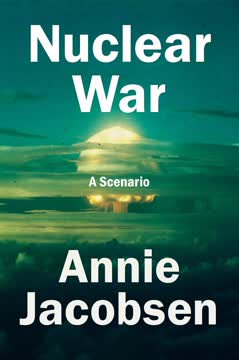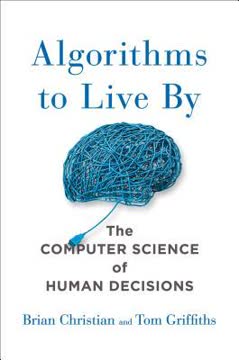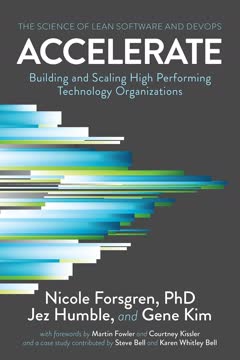Key Takeaways
1. Fusion powers the universe, promising clean, abundant energy
Fusion powers the universe. Every one of the stars in the sky uses fusion to generate enormous amounts of energy. Why shouldn't we?
Fusion's cosmic potential. Fusion, the process that powers stars, represents a promising avenue for clean, abundant energy on Earth. By combining light elements like hydrogen isotopes, fusion releases vast amounts of energy without producing long-lived radioactive waste or greenhouse gases. This natural process has sustained stars for billions of years, offering humanity a glimpse of an almost limitless energy source.
Harnessing stellar power. Scientists and engineers have been working since the 1950s to replicate and control fusion reactions on Earth. The goal is to create conditions similar to those in the core of stars – extremely high temperatures and pressures – to overcome the repulsive forces between atomic nuclei and enable fusion. While significant progress has been made, achieving net energy gain from fusion remains a formidable scientific and technological challenge.
2. Fusion fuel has unparalleled energy density and availability
Since fusion produces energy by modifying the nuclei of atoms (i.e. nuclear energy) as opposed to modifying electron orbits (i.e. chemical energy), we expect the specific energy of fusion fuels to be a million times larger than fossil fuels.
Unmatched energy density. Fusion fuel, primarily isotopes of hydrogen, possesses an energy density orders of magnitude higher than any chemical fuel. This means that tiny amounts of fusion fuel can produce enormous amounts of energy. For example, the deuterium in a bathtub of water contains as much energy as 40 train cars of coal.
Abundant and accessible fuel. The primary fuels for fusion – deuterium and lithium (to breed tritium) – are widely available and easily accessible:
- Deuterium can be extracted from seawater
- Lithium is abundant in the Earth's crust and oceans
- Fuel reserves could last for millions of years
- No geopolitical tensions over fuel access
This abundance and accessibility contrast sharply with the limited and geographically concentrated nature of fossil fuels, offering the potential for energy independence and reduced global conflicts over energy resources.
3. Tokamaks: The leading design for magnetic confinement fusion
As we will learn, they rose to prominence in the 1960s due to the stunning experimental results of the T-3 device in Moscow.
Tokamak breakthrough. Tokamaks, toroidal magnetic confinement devices, emerged as the leading fusion reactor design in the late 1960s. The T-3 tokamak in Moscow achieved unprecedented plasma temperatures and confinement times, sparking a global shift in fusion research priorities. This Soviet design cleverly uses a combination of magnetic fields to confine and heat the plasma:
- Toroidal field coils create the primary magnetic field
- Poloidal field coils shape and position the plasma
- Plasma current generates additional magnetic field and heating
Continued dominance. Despite challenges, tokamaks have maintained their position as the most promising path to fusion energy:
- Decades of research have led to steady improvements in performance
- Largest fusion experiments to date (JET, TFTR) are tokamaks
- ITER, the flagship international fusion project, is a tokamak
However, alternative concepts like stellarators and inertial confinement fusion continue to be explored as potential paths to fusion energy.
4. ITER: The world's most ambitious fusion experiment
ITER aims to demonstrate the scientific and technological viability of fusion energy.
Unprecedented scale and collaboration. ITER (International Thermonuclear Experimental Reactor) represents the culmination of global fusion research efforts. Currently under construction in southern France, ITER is:
- The world's largest tokamak, designed to produce 500 MW of fusion power
- An international collaboration of 35 countries, representing over half the world's population
- Aiming to achieve Q > 10 (fusion power output 10 times greater than input power)
- Testing key technologies for future fusion power plants
Challenges and potential. ITER faces significant technical, financial, and organizational hurdles:
- Complex engineering required for unprecedented plasma conditions
- Budget overruns and schedule delays
- Managing an international project of this scale
Despite these challenges, ITER has the potential to demonstrate the feasibility of fusion as an energy source and pave the way for future demonstration power plants.
5. Plasma confinement: The central challenge of fusion
Confinement is a central issue of this book. How do you make fuel that is hotter than the Sun stay put?
The confinement dilemma. Achieving fusion requires confining an extremely hot plasma (over 100 million degrees Celsius) long enough for sufficient fusion reactions to occur. This presents a fundamental challenge:
- No material container can withstand such temperatures
- Magnetic fields must be used to isolate the plasma from the reactor walls
- Plasma instabilities and turbulence lead to energy and particle losses
Balancing act. Fusion researchers must optimize multiple parameters simultaneously:
- Plasma density
- Temperature
- Confinement time
- These factors are summarized in the "triple product" (nTτ)
Progress in plasma physics, advanced diagnostics, and computational modeling has led to steady improvements in confinement. However, reaching the conditions required for a fusion power plant remains a significant challenge.
6. Alternative approaches: Stellarators and inertial confinement
While it currently looks likely that first-generation commercial fusion power plants will be tokamaks, it is important to research a variety of approaches.
Stellarators: A twist on magnetic confinement. Stellarators offer potential advantages over tokamaks:
- No plasma current required, enabling steady-state operation
- Reduced risk of disruptions
- More complex 3D magnetic field geometry
Recent advances in computational design have revitalized stellarator research, with Germany's Wendelstein 7-X as the flagship experiment.
Inertial confinement fusion (ICF). ICF takes a different approach to fusion:
- Powerful lasers compress and heat tiny fuel pellets
- Aims for extremely high densities for very short times
- National Ignition Facility (NIF) is the largest ICF experiment
While ICF has made significant progress, challenges remain in achieving ignition and developing a practical power plant concept.
7. Fusion's potential to revolutionize energy and enhance nuclear security
By replacing conventional nuclear fission power plants with fusion, the world can eliminate the need for enriched uranium and plutonium, making nuclear bombs much more difficult to produce.
Clean, safe energy. Fusion offers numerous advantages over current energy sources:
- No long-lived radioactive waste
- No risk of meltdown or runaway reactions
- Minimal environmental impact
- No direct production of greenhouse gases
Enhanced nuclear security. The development of fusion power could significantly reduce nuclear proliferation risks:
- Fusion does not require fissile materials (enriched uranium or plutonium)
- Eliminating the civilian use of these materials makes it harder to divert them for weapons
- Fusion power plants are not easily adapted for weapons production
By providing a clean, safe, and abundant energy source while simultaneously reducing nuclear proliferation risks, fusion has the potential to address two of humanity's greatest challenges: sustainable energy production and nuclear security.
Last updated:
FAQ
1. What is [The Future of Fusion Energy] by Jason Parisi about?
- Comprehensive introduction to fusion: The book offers a detailed yet accessible overview of nuclear fusion, covering the science, technology, and challenges of harnessing fusion energy for practical use.
- Bridging research and public understanding: It explains complex concepts without heavy mathematics, making fusion research understandable for scientists, policymakers, and laypeople.
- Focus on magnetic confinement: The narrative centers on magnetic confinement fusion devices, especially tokamaks, and explores their development, current status, and future prospects.
2. Why should I read [The Future of Fusion Energy] by Jason Parisi?
- Clear explanation of fusion’s promise: The book clarifies why fusion is considered a sustainable, high-potential solution to global energy needs, emphasizing its immense fuel reserves and minimal environmental impact.
- Honest assessment of challenges: It provides a realistic look at the technical, financial, and scientific hurdles facing fusion, including why it’s not yet a primary energy source.
- Insight into global collaboration: Readers gain an understanding of international projects like ITER and how fusion research fosters cooperation and advances multiple scientific fields.
3. What are the key takeaways from [The Future of Fusion Energy] by Jason Parisi?
- Fusion’s unique advantages: Fusion offers high energy density, abundant fuel, and low environmental impact compared to other energy sources.
- Technological and scientific hurdles: Achieving practical fusion requires overcoming challenges in plasma confinement, material durability, and large-scale engineering.
- Importance of investment and collaboration: Progress in fusion is closely tied to funding and international cooperation, with projects like ITER serving as critical milestones.
4. What are the main energy sources compared in [The Future of Fusion Energy] by Jason Parisi, and how does fusion fit in?
- Energy hierarchy and sustainability: The book compares fusion with fission, solar, wind, geothermal, tidal, and biomass, highlighting fusion’s position as a high-density, sustainable source.
- Beyond renewability: It explains that sustainability and environmental impact are as important as whether an energy source is renewable.
- Fusion’s fuel abundance: Fusion’s reliance on deuterium and lithium, both abundant in nature, means it could supply humanity’s energy needs for millions of years.
5. What are the fundamentals of nuclear fusion as explained in [The Future of Fusion Energy] by Jason Parisi?
- Overcoming nuclear forces: Fusion requires extremely high temperatures to overcome the electromagnetic repulsion between positively charged nuclei.
- Energy release mechanism: Energy is released because fused nuclei have higher binding energy per nucleon, especially for light elements like deuterium and tritium.
- Fusion fuels and cross-sections: The book details why deuterium-tritium (D–T) fusion is the prime candidate for early reactors, with deuterium-deuterium and deuterium-helium-3 as future options.
6. How does plasma confinement work in [The Future of Fusion Energy] by Jason Parisi?
- Need for effective confinement: Hot plasma must be confined long enough for fusion reactions to occur, despite frequent particle collisions.
- Magnetic confinement devices: Magnetic fields, especially in toroidal (donut-shaped) configurations like tokamaks and stellarators, are used to keep charged particles from escaping.
- Addressing instabilities: The book discusses challenges like particle drifts and plasma instabilities, and how combining toroidal and poloidal fields helps improve stability.
7. What is the Lawson criterion and triple product in [The Future of Fusion Energy] by Jason Parisi?
- Defining ignition conditions: The Lawson criterion sets the minimum product of plasma density and energy confinement time needed for self-sustaining fusion.
- Triple product significance: Including temperature, the triple product (nTτE) indicates the combined requirements for ignition, with specific targets for D–T fusion.
- Practical implications for reactors: Achieving high plasma power multiplication (Q) is more relevant for power plants than just reaching breakeven (Q = 1).
8. Why is superconductivity important in fusion energy according to [The Future of Fusion Energy] by Jason Parisi?
- Enabling strong magnetic fields: Superconductors allow for powerful magnetic fields essential for plasma confinement without resistive losses.
- Breakthroughs in magnet technology: The discovery of type II superconductors enabled fields above 10 Tesla, crucial for fusion devices.
- Future potential: High-temperature superconductors like REBCO could allow even stronger fields and easier maintenance, revolutionizing reactor design.
9. What are the key historical milestones in tokamak development covered in [The Future of Fusion Energy] by Jason Parisi?
- Soviet origins: The tokamak concept was pioneered by Soviet scientists in the 1950s, leading to the first operational devices.
- International collaboration: Declassification of fusion research in the 1950s and 1960s enabled global progress and verification of Soviet advances.
- Performance breakthroughs: Key developments like the T-3 tokamak, bootstrap current, and H-mode significantly improved plasma confinement and stability.
10. What are the bootstrap current and H-mode, and why are they significant in [The Future of Fusion Energy] by Jason Parisi?
- Bootstrap current: This is a self-generated plasma current that reduces the need for external current drive, improving power efficiency and steady-state operation.
- H-mode (high-confinement mode): H-mode is characterized by a turbulence-free edge, doubling energy confinement time and making fusion more practical.
- Design and operational challenges: Both concepts require careful optimization of plasma profiles and introduce new engineering and stability considerations.
11. What are the main design considerations and technologies for a tokamak power plant in [The Future of Fusion Energy] by Jason Parisi?
- Maximizing net power density: The goal is to produce as much net electric power as possible, balancing plasma pressure, magnetic field strength, and external power consumption.
- Material and engineering limits: Designers must consider limits like the Troyon limit (pressure), kink limit (current), and Greenwald limit (density), as well as material survivability.
- Critical technologies: Superconducting magnets, plasma heating systems, first wall materials, divertors, and tritium breeding blankets are all essential components.
12. What is the current state and future outlook of fusion research according to [The Future of Fusion Energy] by Jason Parisi?
- Historical progress and plateau: Fusion research made rapid gains until the late 1990s, but progress has since slowed due to funding and technical challenges.
- ITER as a key milestone: ITER aims to demonstrate Q = 10 and advance fusion knowledge, with operation expected around 2025.
- Future directions: Research is shifting toward smaller, simpler devices, alternative confinement schemes, and increased investment to accelerate the path to commercial fusion power.
Review Summary
The Future of Fusion Energy receives mostly positive reviews, with readers praising its comprehensive overview of fusion technology and energy landscape. Many appreciate the balance between technical depth and accessibility, though some find it too dense for popular science. Reviewers highlight the book's thorough explanations of tokamak reactors, plasma physics, and current challenges in fusion research. While the historical sections and alternative fusion approaches are well-received, a few readers note that some parts read like a textbook. Overall, it's considered an excellent resource for those interested in fusion energy's potential.
Similar Books










Download PDF
Download EPUB
.epub digital book format is ideal for reading ebooks on phones, tablets, and e-readers.




